| Issue #95 • September/October, 2005 |
I have had dairy goats for most of the last 20 years or so and have raised almost every standard breed. But when my grandmother, my youngest daughter, and I moved to a bare one-acre lot near Klamath Falls, Oregon, I decided it was time to look at the smaller breeds. We wouldn’t have room for pasture, so all feed would have to be purchased. Smaller goats eat less than their full-sized counterparts, and so would cost less to keep. I would be able to keep more of them in a smaller area. Also, as I get older, the advantages of smaller animals to care for become more and more obvious.
Pygmies were immediately ruled out because our primary need was milk and, while pygmies can be milked, they are really not dairy goats. I looked into Nigerian Dwarfs, but they are still somewhat in the exotic category and seem to be more expensive than the standard breeds. When I read about Kinder goats (pronounced with a short ‘i’ sound, as in the German word for children), I knew I’d found what we were looking for. A new breed, started only about 20 years ago, they are dual-purpose, good for both milk and meat, and approximately in the middle between their Pygmy and Nubian ancestors in size.
|
There are enough breeders already, so that Kinders have their own classes in some goat shows making them fairly available almost anywhere. It is also possible to start your own line of Kinders by crossing a registered Pygmy buck with a registered purebred Nubian doe.
I chose to find a breeder, as we are limited on the number of animals we can keep on such a small place. I looked through the breeders listed at the Kinder Goat Breeders Association (KGBA) website, and found someone fairy close to home.
Dawn Leaming has been raising Kinders for a number of years, and after several e-mails, my daughter and I made the six-hour trip down to her place near Nevada City, California, on a hot July day. We came home through a raging thunderstorm with a five-year-old milker, twin doe kids, a little buck, and a wether to keep him company.
The kids were still on bottles, and settled in quickly, but Mazola, the milker, was heartbroken at being separated from her pen-mates, and bawled loudly for hours on end at first. She still thinks I ought to live in the goat pen with her, and cries when I go back up to the house. But the noise doesn’t last very longand thankfully, our neighbors seemed more amused than bothered by the racket.
However, I learned my lesson. If I purchase an adult doe again, I will also purchase one of her pen-mates, if possible.
I was really surprised at how quickly Mazola decided I was her friend. Within days (after some struggles at milking time, as I was not the person who was “supposed” to be milking her) she was nuzzling up to me while I gave the babies their bottles. These are very friendly, affectionate goats and really not all that noisy once they’ve settled in.
High quality milk
So far, I haven’t found any serious downside to these little goats. Oh, if I take up goat-packing, they might not be able to carry as much as the big guys, and they don’t give as much milk in sheer quantity as some larger does, but what they do give is the best quality milk I’ve ever had. The butterfat is high, ranging from around 5½ to over 7 percent. Milk solids are also high, making for excellent cheese yields. A gallon of milk from one of the larger breeds of goat, or from a cow, will usually yield around a pound to a pound and a half of cheese, but a gallon of Kinder milk will yield about twice that.
The flavor of the milk is excellent, and it seems to have good keeping quality. Of course, it’s really important to follow good dairy practice in cleaning your equipment, so you don’t end up with milkstone deposits. I only have one milker right now, and she peaked at two quarts a day and was holding steady months later at a little over a quart a day, so I haven’t had a lot of surplus milk to play with yet, but I have made kefir cheese and some yogurt.
|
I keep two jars of kefir going all the time and have found that a couple of jars of kefir, let sit for 24 hours in a clean muslin cloth, makes a nice sour soft cheese that is excellent with some herbs and garlic powder added to it.
The yogurt made from Kinder milk is also excellent. It isn’t quite as thick as store-bought, which has all kinds of thickeners added to it, but it is thicker than the yogurt I’d made in the past from Alpine or Nubian milk.
When I got Nubians for the first time several years ago, I thought their milk was much better than the milk of the other breeds of goats I’d raised. But the Kinder milk is even better than the Nubian milk was and it has seemed to keep its quality clear through the lactation, even with the stress of moving to a new home and several feed changes.
My little doe gives enough milk for us for kefir and a little cheese, but many Kinder does give three or four quarts of milk a day right through their lactation. There are a few Kinder does who average over a gallon of milk a day.
Now, I realize that many Alpines, Saanans, Toggs, LaManchas, and Nubians give much more milk than that. There are standard-breed goats who average over two gallons of milk a day, and some record breakers that give a lot more than that. This is good if you are selling milk, or have some other use for it. You can use goat milk as an addition to the feed of many other animals. However, I’m a very practical person, and I don’t want to be feeding animals who are producing more than we can use. Goats that give two or three quarts of rich milk each day are very practical animals for most people.
Breed year-round
One advantage Kinders have is that they will breed year-round. The Northern European breeds of goats are all seasonal breeders, but goats from the tropics, such as the Nubians and Pygmies, will breed at any time of the year. This means that you can breed one doe to kid in the spring and milk through the summer, fall, and early winter. Then breed the other doe in April or May for a winter supply of milk. They’ll overlap a little bit, but you can make cheese with the surplus. It’s always nice to have a home supply of milk. However, you should plan your breeding so you don’t have kids being born during really cold weather.
Easy-milking teats
As I started looking for goats to buy, I was concerned about teat size. I knew that Pygmies normally have small teats and are no fun to milk. Some of the Nubians I’d had were quite easy to milk, but there were a couple of them with tiny teats. I have a little arthritis and have carpal tunnel in both wrists, so easy milking was important for me to look for.
Thankfully, Dawn Leaming is breeding for easy-milking goats. Mazola is very easy to milk with her hand-sized teats, and the doe kids, Lark and Linnet, already look like they will have easy-to-grasp teats when they come into milk in a year or so. My low milk pail with a half-moon cover fits nicely under Mazola’s udder. From what I’ve heard, owners of Pygmies and Nigerians sometimes have trouble getting a milk pail underneath their little goats.
Good meat animals
|
Kinders are also useful meat animals. I haven’t butchered any of mine yet, but people who do butcher surplus animals are reporting dress out percentages of 60 percent or higher. A six-to-eight month old kid weighing 50 pounds should dress out to 30 pounds. A 14-month-old wether weighing 80 pounds should dress out to about 50 pounds, a dressing percentage of nearly 63 percent.
I plan to save and tan the hides and feed the offal to my dog as part of a “natural” diet for him. So there will be very little waste of any kind.
Having some experience with butchering larger animals such as moose and caribou from my years living in Alaska, I know that when butchering time does come here, I’ll be thankful these guys aren’t huge.
Since Kinder does have a high kidding percentagewith whole herds averaging 300 percent or higher, and individual does often having quads, quints, or even sextupletsand the kids have a very high rate of growth (often as high as Boer kids), you can see that the potential for meat production from Kinders is very high. One 115-pound doe can easily produce 150 pounds of meat, or more, in 14 months. And by the time you butcher the first batch, she’ll have kidded again and be raising another batch of kids.
Two or three Kinder does, some poultry, and maybe a few meat rabbits can easily provide all the dairy products, meat, and eggs most families can use, all on a very small piece of land.
Feed efficiency
Their feed efficiency is good, also. They can milk as well as their Nubian ancestors, but because they are smaller-bodied, they need less feed. Mazola was getting fat while eating grass hay and about two pounds of grain a day, and giving two quarts of milk a day. I had to cut her grain by half to keep her from getting too fat. Now I’m feeding the does alfalfa pellets, about half a pound of COB (corn, oats, and barley mixed with molasses) each, and a handful of sunflower seeds each day, and they are all in good flesh, even well into the winter.
They are also getting a loose salt/mineral mix (I’m using one meant for cattle, as goats need more copper than sheep do), and a supplement meant for horses that contains selenium and Vitamin E. Some breeders use Purina Goat Chow, but my goats are doing well on COB, and I know what’s in the COB.
Hardy and long-lived
|
In addition to all their other advantages, Kinders seem to be hardy, healthy, and long-lived. Pat Showalter, of Zederkamm Kinders in Snohomish, Washington, had one of her original Kinder does born in 1986, still going strong in 2001 at age 15. They also don’t seem to need their hooves trimmed quite as often as some breeds, though this important chore still can’t be neglected. If they are going to stay productive for as long as possible, they need sound legs, and letting their hooves get overgrown can damage their legs.
Easier to fence
Another advantage is that it is easier to fence them. The consensus among breeders is that, while once in a great while a Kinder will be a fence-jumper (and this usually stops after they kid for the first time), very few will jump out of a cattle panel fence. I use combi cattle panels turned upside down for my goat pens, so the smaller holes are at the bottom. This keeps young kids from escaping, usually. I cut out a section of wire in each pen, so the goats could reach through to their water buckets on the outside of the pens, where the water stays cleaner, and the buckets are less likely to get knocked over.
My two doe kids discovered that when the water got low in the buckets, they could knock them over and then squeeze through the holes. The smaller of the twins can still do this, so I have to watch her when I’m cleaning and refilling their water bucket. She doesn’t go anyplace, and right now there isn’t anything she can damage while she’s out, but pretty soon I’ll be planting the garden again, so I hope she outgrows the hole quickly.
Of all the breeds of goats I’ve had over the years, Kinders are proving to be my favorite by far, and I plan to never be without at least a few of them around.
Resources
For more information, including milk records and a list of some Kinder goat breeders, go to: www.kindergoats.org.
There is also a Yahoogroups list for people who have, or are interested in, Kinder goats at: http://groups.yahoo.com/group/KinderGoats/?yguid=109437082. There are over one hundred members, and a lot of good advice and information from people with years of experience. It’s also a good place to find breeders who aren’t listed on the association website.
The following recipes are taken from Goats Produce Too, The Udder Real Thing, Volume 2, by Mary Jane Toth, 2833 N. Lewis Road, Coleman, Michigan 48618.
Plain goat milk yogurt
2 qts. goat milk
1 cup powdered milk (optional, and not really necessary with Kinder goat milk)
2 tsp. plain cultured yogurt
clean canning jars, pint or quart
Warm milk to 115 degrees. Stir in powdered milk if desired. Add 2 tsp. of cultured yogurt. Mix well and pour into clean jars. Place filled jars into a roaster or kettle. Fill the roaster or pan with hot tap water up to the neck of the jars. Cover and set in a warm place to incubate for 6-8 hours. Do not disturb during incubation. Yogurt will thicken when ready. When making plain yogurt, save some to use as a culture for your next batch. Keep refrigerated.
French style chevre
5 qts. whole goat milk
½ cup cultured buttermilk
2 Tbsp. diluted rennet (dilution = 3 drops liquid rennet into 1/3 cup cool water. Do not use rennet tablets from the grocery store.)
Warm milk to 80 degrees. Stir in buttermilk. Mix well. Add 2 Tbsp. of diluted rennet mixture. Stir well and cover. Let set at room temperature for 8-12 hours. Cheese is ready to drain when it looks like thickened yogurt. Curds may have a thin layer of whey floating on top.
Only use muslin cheesecloth (not the gauzy stuff called cheesecloth) or pillowcase cloth to drain. Line a large bowl or pan with cloth. Pour curds into center of cloth. Gather up corners of cloth and hang to drain 6-8 hours.
When dripping has stopped, cheese is ready. It should be the consistency of cream cheese. To speed up draining, scrape the sides of the bag towards the center several times during the draining process.
This cheese is soft and mild. It can be seasoned with a variety of herbs or spices. Or, use it as a substitute for cream cheese in other recipes. The cheese keeps well, refrigerated, for two weeks.
Freeze unseasoned, in one pound packages. Keeps well frozen for 6 months. Do not freeze seasoned cheeses. Herbs and spices will lose their potency and flavor. Thaw at room temperature. Season after thawing. (One pound = two cups)
Wrap well before freezing, or use heavy freezer bags.


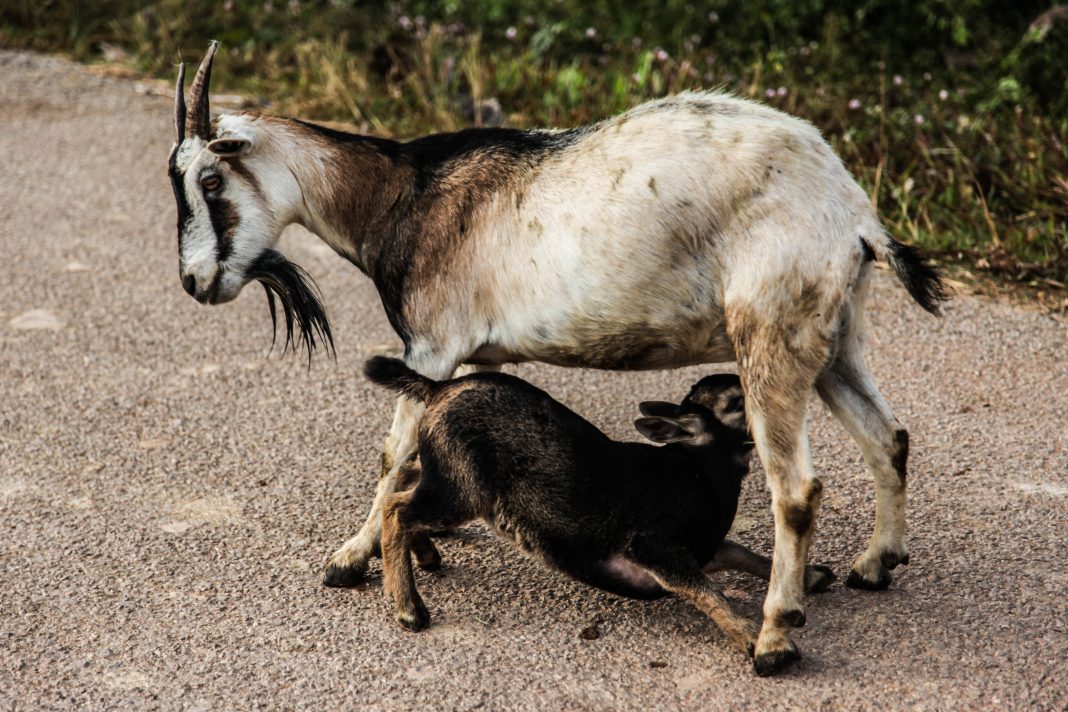




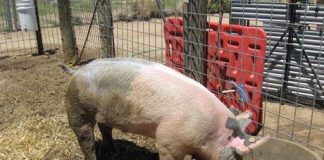
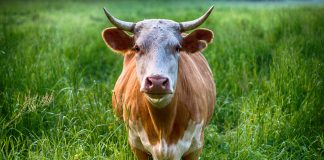





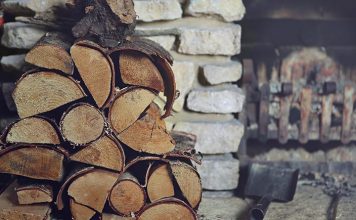



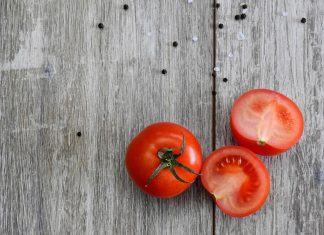
Could not have written this better myself, and almost our story. We’re in SW Washington and have a small herd of kinders. There milk is sweet like ice cream and I’m getting 30+ ounces of Chevre per gallon. Such love bugs!
https://www.facebook.com/motohooligans/
Thanks for the article.
Brian
Hooligan Acres
Excellent article. Thank you for answering so many questions in a clear and interesting manner.
Excellent article. I will consider Kinder goats. You have given me a lot to think about.
Thank you,
Darlene Dreamy Ranchers Dairy
Idaho